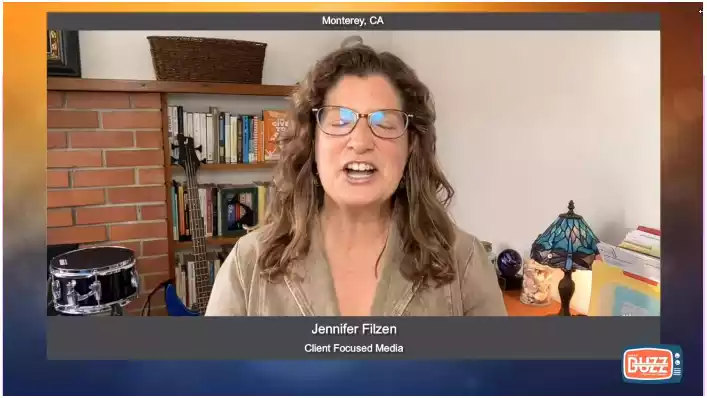Maximizing Success in Prior Authorization: Key Strategies for Healthcare Providers
Unlock the key to seamless healthcare operations with our comprehensive guide to maximizing success in prior authorization.

Imagine a solution where obtaining prior authorization for medication is simplified and expedited. Virtual staffing companies, like ours, specialize in guiding patients through the process of obtaining authorization for their prescribed medications. By leveraging our expertise, patients can navigate the necessary steps with ease, reducing the time spent waiting for approval. As businesses embrace innovative solutions to enhance customer service, virtual staffing services play a pivotal role in achieving these goals.
Let’s start!
Table of Contents
Maximizing Success in Prior Authorization for Improved Healthcare

This comprehensive guide will explore key strategies for healthcare providers to master the prior authorization process, reduce denials, and streamline operations. We aim to provide practical advice that can be implemented in various healthcare settings, from small practices to large, multi-specialty clinics.
Understanding the Prior Authorization Process
Before discussing strategies for maximizing prior authorization success, it’s essential to understand the process itself. Health insurers mandate that clinicians get prior authorization before writing a prescription for a particular drug or course of treatment. This process is meant to control costs and ensure necessary and appropriate care.
The typical PA process involves:
- Provider Initiation: A provider identifies a treatment or medication that requires prior authorization and begins the process with the patient’s insurance company.
- Submission of Supporting Information: The provider or their team gathers and submits the necessary clinical information to the insurance company, often including forms and any requested medical records.
- Approval or Denial: The insurance company reviews the information and decides to approve or deny the request.
- Patient Notification: The provider receives notification from the insurer and communicates the decision to the patient.
- Appeals: If a request is denied, the provider may file an appeal by supplying more proof to back up their claim.
Key Prior Authorization Strategies for Providers
An integrated strategy that includes both external payer communications and internal workflows is needed to optimize the prior authorization process. Here, we go over some essential tactics for effectively navigating this frequently difficult procedure.
Establishing Clear Communication Channels
Clear communication is the linchpin of a smooth prior authorization process. Providers should establish direct lines of dialogue with insurance representatives and maintain up-to-date contact information for those who handle PA requests.
- Internal Communication: It is crucial to ensure that all relevant staff members, from medical assistants to billing specialists, are aligned and informed about PA requirements for various payers. Regular training and updates can prevent errors and delays in the submission process.
- External Communication: Developing relationships with payer representatives can also improve the PA process. Understand each payer’s preferences and protocols, which can often change over time, and acknowledge that these individuals are essential collaborators, not adversaries.
Develop Standardized Workflows
Standardized workflows for prior authorization requests are essential to avoid unnecessary redundancies and ensure everything runs smoothly.
- Checklist for Eligibility and Necessity: Have a comprehensive checklist to assess a patient’s eligibility for a specific treatment or medication. This should include reviewing the insurance policy, medical necessity criteria, and any prior trial requirements set by the insurer.
- Documentation Management: Efficiently managing the documentation for prior authorizations is key. Consider using electronic health record (EHR) tools that support PA documentation and follow an evident filing and retrieval system. This includes quickly generating and sending required forms and documents to payers as part of the submission process.
Leverage Technology Solutions
Healthcare technology has revolutionized many patient care areas; prior authorizations are no exception. Integrated software solutions can significantly streamline the PA process.
- Prior Authorization Portals: Many insurers offer online portals for prior authorizations. Familiarize your team with these tools, as they may provide a more direct and rapid route for submission than traditional methods.
- Automated Verification Systems: Invest in tech solutions that can automate eligibility verification, flag PA requirements for specific medications or treatments, and even initiate the PA process with minimal staff intervention.
Implement Best Practices for PA Submission
Submitting prior authorizations requires attention to detail and adherence to payer-specific guidelines.
- Timely Submissions: Avoid last-minute submissions, which can lead to rushed or incomplete applications. Rather, establish a consistent timetable that takes into account the provider’s and insurer’s review periods for starting the PA process after treatment is recommended or scheduled.
- Concise and Clear Documentation: While thoroughness is critical, the documentation submitted for PA should also be brief and to the point. Don’t include extraneous details that could impede the review process; only the material required to support the request should be included.
Review and Improve Denial Management

Effective denial management is essential to the PA process. Providers can reduce future problems and raise their approval rates by knowing the causes of denials.
- Consistent Denial Monitoring: Review denial rates regularly to identify common trends. Are there specific treatments or insurers that consistently lead to denials? By identifying patterns, providers can direct resources to improve these areas.
- Educate and Support Staff on Appeals: Develop a robust process for managing appeals, including staff training on the requirements for different payers. This may involve creating a library of evidence and documentation commonly required for successful appeals and a clear escalation path for complex cases.
Continue to Comply with Regulatory Modifications
Healthcare rules are always changing, and one of the non-negotiable aspects of the PA process is compliance.
- Stay Informed: Providers must stay current with changes to prior authorization regulations, as failing to comply can lead to denials or, in some cases, legal consequences. Regularly review guidance from organizations such as the Centers for Medicare & Medicaid Services (CMS) and specialty boards that may offer best practices or updates on PA requirements.
- Adapt and Educate: Once aware of changes, providers must educate their teams and update internal processes accordingly. This might involve updating forms, changing the information required for submissions, or adjusting workflows to accommodate new rules.
I'm very thankful for Portiva who I know is looking after my practice while I'm gone the virtual assistants can manage prescription refills, documents they can triage patients and just kind of answer administrative questions and they can handle a lot on their own. But also, they're very good about contacting me if there's any emergency or anything I need to attend to. So I'm very thankful for Portiva they can help almost any provider almost anywhere and it really allows for some good work-life balance as I'm getting to experience right now at my family farm so I'm very thankful for Portiva and I'm very happy to use their services"

Board Certified Family Medicine Physician

Portiva's Virtual Medical Assistant - I have all the support I need. There's somebody checking my email, any patient messages. Patients are still able to schedule and handle any scheduling issues and any kind of billing that needs to still go through. Portiva hands handles it all for me. I have support i have somebody that I can access 24/7 pretty much. It's all very seamless. If somebody has an emergency or needs a medication called in. I know that the va's at portiva will handle that for me.

Board Certified Family Medicine Physician

Real-World Examples of PA Success

Example 1: A Neurology Practice
A neurology practice reduced their average prior authorization processing time from weeks to days by implementing a specialized software solution integrated with their EHR. The system flagged medications that required approval, auto-populated necessary forms, and provided direct submission to payer portals. They also designated a ‘PA Champion’ within their staff to oversee and troubleshoot all PA requests, leading to a remarkable decrease in denials.
Example 2: A Family Medicine Clinic
A family medicine clinic tackled its high denial rates by instituting a dual-check process for all PA submissions. Before a request was sent to the insurer, a second team member reviewed it to ensure the completeness and accuracy of the application. Staff were also presented with a denial ‘playbook’ that outlined common reasons for denials and steps to rectify these issues before the appeal process. By implementing these proactive strategies, providers can ensure that their PA process is efficient and compliant with payer policies and regulatory standards.
Final Thoughts
Prior authorization is inevitable in modern healthcare, but it doesn’t have to be a source of frustration and delays. By approaching the PA process strategically and collaboratively, providers can increase operational efficiencies, decrease administrative burdens, and improve patient care.
Remember, mastering prior authorizations is an ongoing process. Long-term success depends on routinely reviewing your tactics, keeping up with changes in the business, and providing ongoing training to your employees. It’s a marathon, not a sprint, but the rewards for your patience and practice will be well worth the effort.
To learn more about healthcare providers that can enhance your medical practice. Discover more about Portiva and unlock a world of possibilities by visiting our homepage today!
- The future of electronic prior authorization
- Prior authorization compliance in healthcare
- Measuring efficiency in prior authorization
- Health insurance’s prior authorization process
- Quality assurance in prior authorization
- Provider training in prior authorization
- Cross-sector collaboration in prior authorization
- Operational excellence in healthcare prior authorization
- Financial landscape of prior authorization in healthcare
- Patient’s complete guide to navigate prior authorization
- Easing stress with preauthorization solutions
- Transitioning prior authorization tasks
- Precertification in private practices
- Healthcare prior authorization
- Optimal results in prior authorization
- Patient satisfaction and prior authorization
- Precertification efficiency with virtual medical assistants
- Elevating patient care through outsourcing preauthorization
- Handling common hurdles in precertification

